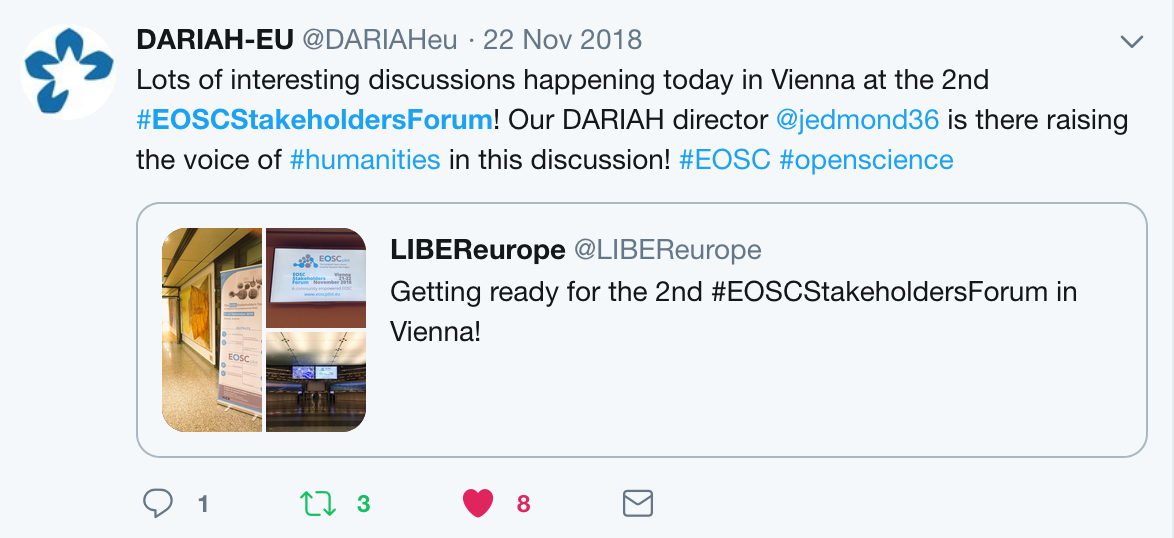
Plenary Session DAY 2 - The EOSC continues to evolve
Plenary Session 2: A community-empowered EOSC
Hey everyone! Be sure to follow the #EOSC Portal's official Twitter account: @EoscPortal#EOSCStakeholdersForum#EOSC18#EOSCportal pic.twitter.com/4eheikjOzn
— EOSCpilot.eu (@eoscpilot) 23 November 2018
The contribution of the ESFRI infrastructures to the EOSC - JC Burgelman subbing for JD Malo
Opening the second day of the EOSC Stakeholders Forum was European Commission Directorate-General for Research & Innovation - Open Science and Open Innovation Director Jean-David Malo who sent a message for the EOSC Stakeholders Forum that was read on his behalf by Jean-Claude Burgelman.
Jean-David’s message opened by acknowledging the EOSCpilot project’s contributions to the development of the EOSC. He continued, “The EOSC is not EU-branded and nor is it a new research infrastructure at all. It is a federation building on existing infrastructures. However, it won't be easy. Sometimes it can be more difficult when you’re not starting from scratch.”
He added, “Research infrastructures are identified as the main actors in the development of the EOSC. They will provide most of the content of EOSC. Without them, it would be an empty shell.”
Jean-David emphasised the importance for research infrastructures to be on board the EOSC initiative. “And this is what we achieved. We have managed to have most on board. The fact of the matter is that their participating in EOSC is essential, both nowadays as well as in the future, as the EOSC continues to evolve.”

The director then called upon research infrastructures to be more open towards finding synergies with the EOSC. “Research infrastructures should have an open mindset. We shouldn’t be too conservative. Research infrastructures shouldn’t be afraid to lose their role. In fact, EOSC will actually facilitate their involvement further. EOSC will not disrupt but the research infrastructures should be ready to adopt new practices. It’s just natural evolution,” Jean-David said.
This year, a call topic was launched for connecting ESFRI infrastructures to the EOSC. “This led to five cluster projects for the life sciences, analytical sciences, environment and astronomy. These projects will work towards integration. It won’t be five separate platforms but they will work towards EOSC and gain visibility there,” said the director.
He said they are counting on the representatives of the EOSC board to contribute to the uptake of FAIR principles and foster cooperation between pan-European research infrastructures while also inviting ESFRI as a forum to be an active contributor.
His presentation was followed by quick presentation from various EOSC INFRA Cluster projects such as EOSC-Life for life sciences infrastructures, ENVRI-FAIR for environmental research infrastructures, ESCAPE as the astronomy and particle physics cluster, PANOSC for multidisciplinary scientific analysis services, and SSHOC for the social sciences and humanities ESFRIs. They all detailed the activities towards connecting their domains to EOSC.
LINKS:
All the sessions pages and the whole programme for EOSC STAKEHOLDER FORUM can be found at this link: https://eoscpilot.eu/stakeholders-forum/2018-edition/second-eoscpilot-st...
